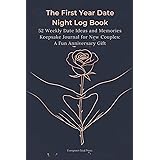With over a decade of experience shooting weddings, Pye, an accomplished photographer and educator from Adorama TV, recently shared ten critical tips for those embarking on their very first wedding photography journey. These insights, forged from years in the field, are specifically tailored to help new wedding photographers navigate the unique challenges of such a significant event. The emphasis is placed on practical, actionable advice that extends beyond the common suggestions, truly equipping you for success.
Embarking on a career in wedding photography can be both exhilarating and daunting. As a beginner, the pressure to perform flawlessly while simultaneously learning the ropes is immense. However, by focusing on key strategies, many of the initial anxieties can be alleviated. The following points expand upon the foundational wisdom offered in the video, providing a comprehensive guide to mastering your craft from the outset. From understanding your value to strategic collaboration, these principles are designed to transform your approach to wedding photography and accelerate your professional development.
Starting Strong: Navigating Your First Wedding Photography Gigs
The Value of Charging: Why Even Beginner Wedding Photographers Should Set a Price
One of the initial hurdles for many new wedding photographers involves determining what to charge. It is often believed that offering services for free or at a minimal rate will help build a portfolio. However, charging for your time, even if it’s a modest sum like $500 or $1,000, establishes the perceived value of your work. When a service is provided without cost, its importance can easily be underestimated by clients, potentially leading to a lack of respect for boundaries or additional, unpaid demands.
The act of exchanging money for services creates a mutual understanding of commitment and worth. For you, it reinforces the professionalism of your endeavor, while for the client, it underscores the significance of the moments being captured. While a premium price may not be justifiable at the start of your journey, setting any monetary value encourages both parties to take the engagement seriously. This practice is crucial for protecting your time and energy, preventing potential exploitation, and laying the groundwork for a sustainable photography business.
Setting Realistic Client Expectations: Honesty is the Best Policy for New Wedding Photographers
In the competitive world of wedding photography, there can be a temptation to present oneself as more experienced than one truly is. However, transparency regarding your experience level is paramount, especially when you are just starting out. Clients appreciate honesty, and this candid approach helps manage their expectations effectively. If clients understand that you are new, yet still choose to hire you, it often indicates they are willing to take a chance in exchange for a potentially more affordable service.
Consider a scenario where your initial wedding photography package is priced at $1,000, even though the quality of your work might already rival photographers charging $2,000 or $3,000. This disparity allows your early clients to benefit significantly, receiving high-value output at a fraction of the cost. This creates a positive experience for them, leading to enthusiastic referrals and testimonials, which are invaluable for building your reputation. As your experience grows and your skills sharpen, your rates can then be adjusted upwards, always ensuring the perceived value exceeds the actual cost.
Mastering the Moment: Understanding and Prioritizing Client Needs
Uncovering Client Values: The Heart of Successful Wedding Photography
A wedding day is a whirlwind of activity, with hundreds of moments unfolding simultaneously. For a solo wedding photographer, or even one with a second shooter, it is impossible to capture every single instant. Therefore, understanding what your clients truly value becomes the cornerstone of successful image delivery. Instead of just focusing on logistical details like timelines, engaging clients in deeper conversations can reveal their core priorities.
Imagine if, during your initial consultations, open-ended questions were asked. For example, simply asking, “What are you looking forward to most on your wedding day?” can elicit heartfelt stories and reveal emotional attachments to specific people, traditions, or moments. By listening intently to their descriptions, observing their body language, and noting recurring themes, valuable insights into their preferences are gained. This method, often facilitated by psychological visualization exercises, helps ensure that your lens is pointed towards the moments that will resonate most profoundly with the couple, creating images that hold immense personal significance.
Prioritizing What Truly Matters: Beyond the Visually Interesting Shot
As a creative, there is a natural inclination to seek out visually captivating scenes for your portfolio. However, this artistic drive must be balanced with the client’s explicit and implicit desires. Prioritizing client values means ensuring that all “must-have” shots are captured before venturing into more experimental or portfolio-driven photography. Failure to do so can lead to significant client disappointment, even if a gallery is filled with otherwise stunning images.
Consider the common scenario of a photographer captivated by an energetic guest on the dance floor, taking numerous shots of this one individual. Meanwhile, a quieter but equally important family member, like a grandmother, might be overlooked. Later, when the clients ask for a photograph of their grandmother, only to find none, the perceived value of the entire collection diminishes, regardless of the artistic merit of other shots. This underscores the importance of a clear understanding of client values, allowing the wedding photographer to consciously choose what to focus on, ensuring cherished moments are never missed.
Technical Foundations and Workflow for Aspiring Wedding Photographers
Essential Technical Habits: Shooting RAW and In-Camera Backup
The technical foundation of your wedding photography workflow is critical for both image quality and data security. Regardless of the camera model, two practices stand out: shooting in RAW format and utilizing in-camera backup. Shooting RAW provides unparalleled flexibility in post-production, preserving a vast amount of image data that allows for significant adjustments to exposure, color, and white balance. This flexibility can be a lifesaver if a crucial shot is slightly underexposed or has an incorrect white balance, as more details can often be recovered than with a compressed JPEG file.
Equally vital is the use of in-camera backup, which typically involves a camera with dual card slots. This feature records every image simultaneously to two separate memory cards. In a once-in-a-lifetime event like a wedding, the potential for a card failure, corruption, or even loss is a constant threat. Having an immediate, in-camera duplicate of every shot provides an essential layer of security. Furthermore, a robust post-wedding workflow often involves sending primary cards with one team member and secondary cards with another, ensuring physical separation of data until all images are securely stored on multiple servers and cloud backups, providing maximum peace of mind.
The ‘Cover Your Assets’ Principle (CYA): Shooting More to Avoid Missing Moments
In the dynamic environment of a wedding day, it is frequently questioned whether certain details or moments warrant being photographed. The “Cover Your Assets” (CYA) principle suggests that if there is any doubt, it is always better to take the shot. Capturing extra images, whether it is of the elaborate hors d’oeuvres, unique floral arrangements, or an unexpected candid moment, costs virtually nothing in terms of time or resources in the digital age. Conversely, the cost of missing a photo that a client later expresses a desire for can be immeasurable, leading to regret and dissatisfaction.
This principle is particularly relevant for a beginner wedding photographer who might not yet have a fully developed intuition for what clients will appreciate. By errring on the side of over-documentation, a broader range of options is presented to the client, increasing the likelihood of fulfilling unexpected requests. This proactive approach minimizes the chances of client complaints related to missing images and enhances the perceived completeness of the delivered gallery.
Beyond the Camera: Directing and Storytelling on the Wedding Day
Embracing Your Role as Director: Confidence Behind the Lens
Many creatives, including wedding photographers, naturally lean towards introversion. However, on a wedding day, the camera in hand transforms into a “passport” that grants permission to be extroverted and take control. You are being paid not just to take pictures, but to direct, to organize, and to pose individuals and groups in a kind yet firm manner. This role requires confidence, especially when facing large groups for formal portraits or needing to interrupt conversations for a shot.
Imagine stepping onto a crowded dance floor, needing to orchestrate a specific group shot. Without the perceived authority that your camera bestows, it might feel awkward. However, by embracing the idea that the camera is your tool for direction, you are empowered to guide guests and subjects effectively. This temporary shift in personality allows you to achieve the necessary shots, ensuring smooth transitions and well-composed images. Once the camera is put down at the end of the event, the introverted self can return, but for the duration of the shoot, leadership is a key component of your service.
Storytelling Through the Lens: The Wide, Medium, Tight Framework
For those shooting their first wedding, the creative pressure can be overwhelming. Developing a narrative style on the spot often feels challenging. A simple yet effective framework for storytelling through images is the “wide, medium, tight” approach. This method, commonly employed in film and television, ensures a diverse collection of images that can effectively convey a scene, a relationship, or an emotion within a photo album, wall art, or blog spread.
A wide shot establishes the overall environment and context of a scene, drawing the viewer in. Medium shots then bring focus to the individuals involved, showing their interactions and relationships within that setting. Finally, tight, close-up shots capture intimate details, expressions, and emotions, adding depth and personal connection to the narrative. By consciously seeking out these three perspectives for every significant moment, a beginner wedding photographer can build a cohesive and compelling visual story, enhancing the overall impact and value of the delivered work.
Strategic Planning and Collaboration for First-Time Wedding Photographers
Mastering Family Portraits: Avoiding Common Pitfalls with a Detailed List
Family portraits are undeniably one of the most significant and potentially contentious aspects of wedding photography. While they offer immense opportunities for creating cherished memories and even profitable sales, they are also the number one source of client complaints. These complaints invariably stem from either missing a specific portrait or an unfulfilled combination of family members. To preempt such issues, a structured approach is essential.
While extensive shot lists for the entire wedding day can stifle creativity, a detailed list specifically for family portraits is highly recommended. This involves a collaborative discussion with clients to ascertain all desired groupings and combinations. It is advisable to inform clients that each combination typically requires approximately two to three minutes to set up and photograph, helping manage expectations regarding the length of the session. Furthermore, the timeline must accommodate these requirements. Crucially, attention must be paid to technical aspects, such as using an appropriate aperture (e.g., f/4 or f/5.6) for group shots to ensure everyone is in sharp focus, rather than a shallow depth of field like f/1.2. Proactive planning in this area can dramatically reduce potential client dissatisfaction.
The Ultimate Investment: Hiring an Experienced Second Shooter for Your First Wedding
For a beginner wedding photographer, the prospect of hiring an experienced second shooter might seem counterintuitive, especially when initial earnings for a first wedding might range from $500 to $1,500, and a seasoned professional might command $500 or more for an eight-hour day. This means a significant portion, or even all, of the revenue might be reinvested. However, this decision represents one of the most powerful catalysts for career acceleration.
These early weddings can be treated as live, hands-on educational events. Unlike formal workshops that can cost upwards of $1,500-$2,000, bringing on an experienced second shooter provides real-time mentorship and immediate elevation of your output quality. Not only will the quality of the overall image set improve dramatically, delighting your clients, but also an invaluable opportunity for learning is created. Questions about lighting on the dance floor, specific shot compositions, or handling challenging situations can be asked and observed directly. Furthermore, access to their images in your catalog allows for post-shoot study, revealing their techniques and thought processes. This singular investment can propel a wedding photographer’s career trajectory by five to ten times within a year, offering insights and skills that would otherwise take years to acquire independently.











